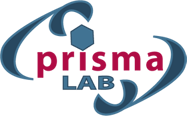The Robotics Lab is the main experimental facility of the PRISMA Team devoted to design, development and testing of innovative robotic solutions. The lab is equipped with fast prototype machines, e.g. 3D printers and CNC, and several manipulation robots employed for research in industry and service robotics.
Venue: Department of Electrical Engineering and Information Technology, University of Naples Federico II, bldg. 5/A, via Claudio 21, 80125 Naples
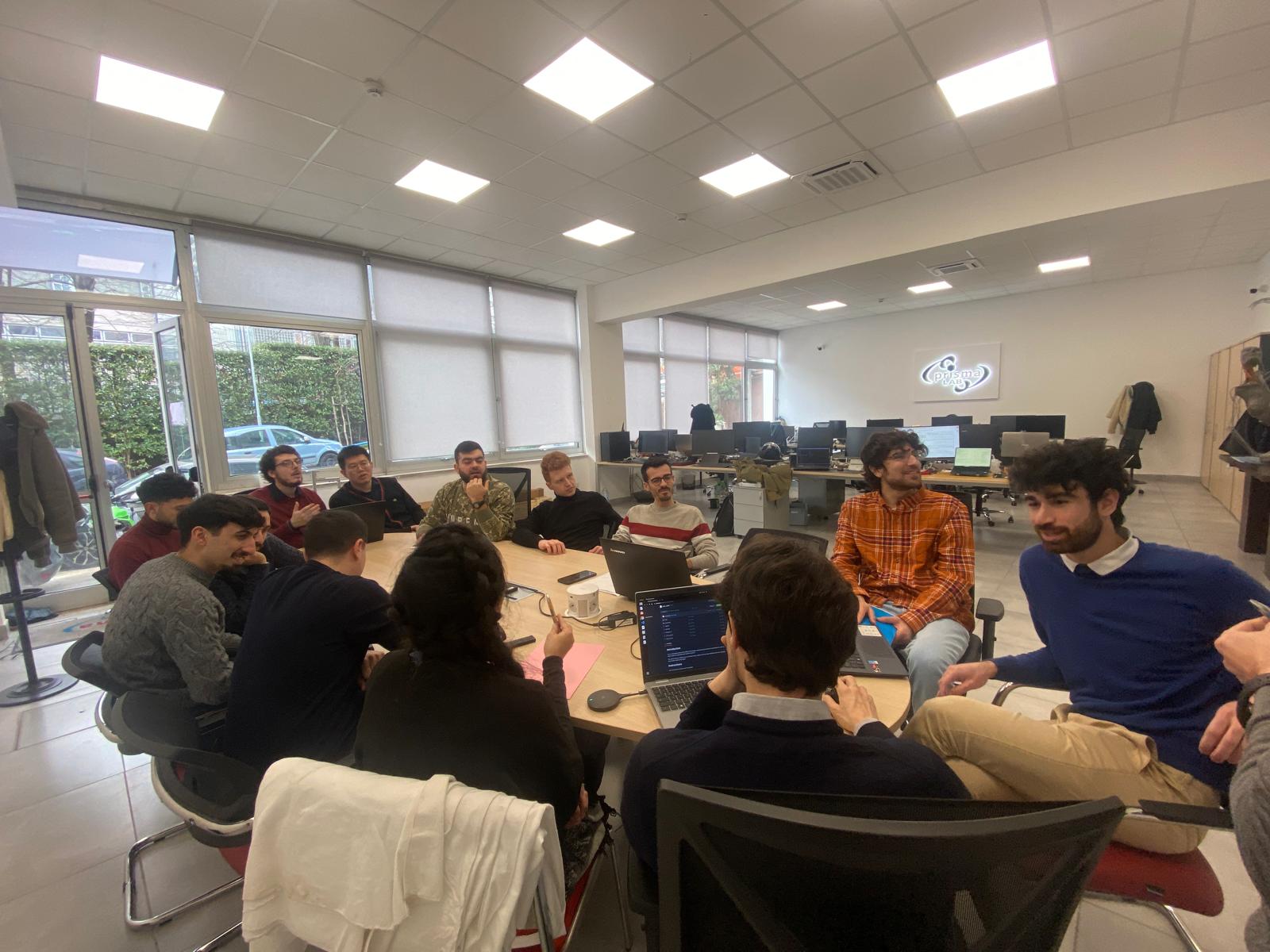
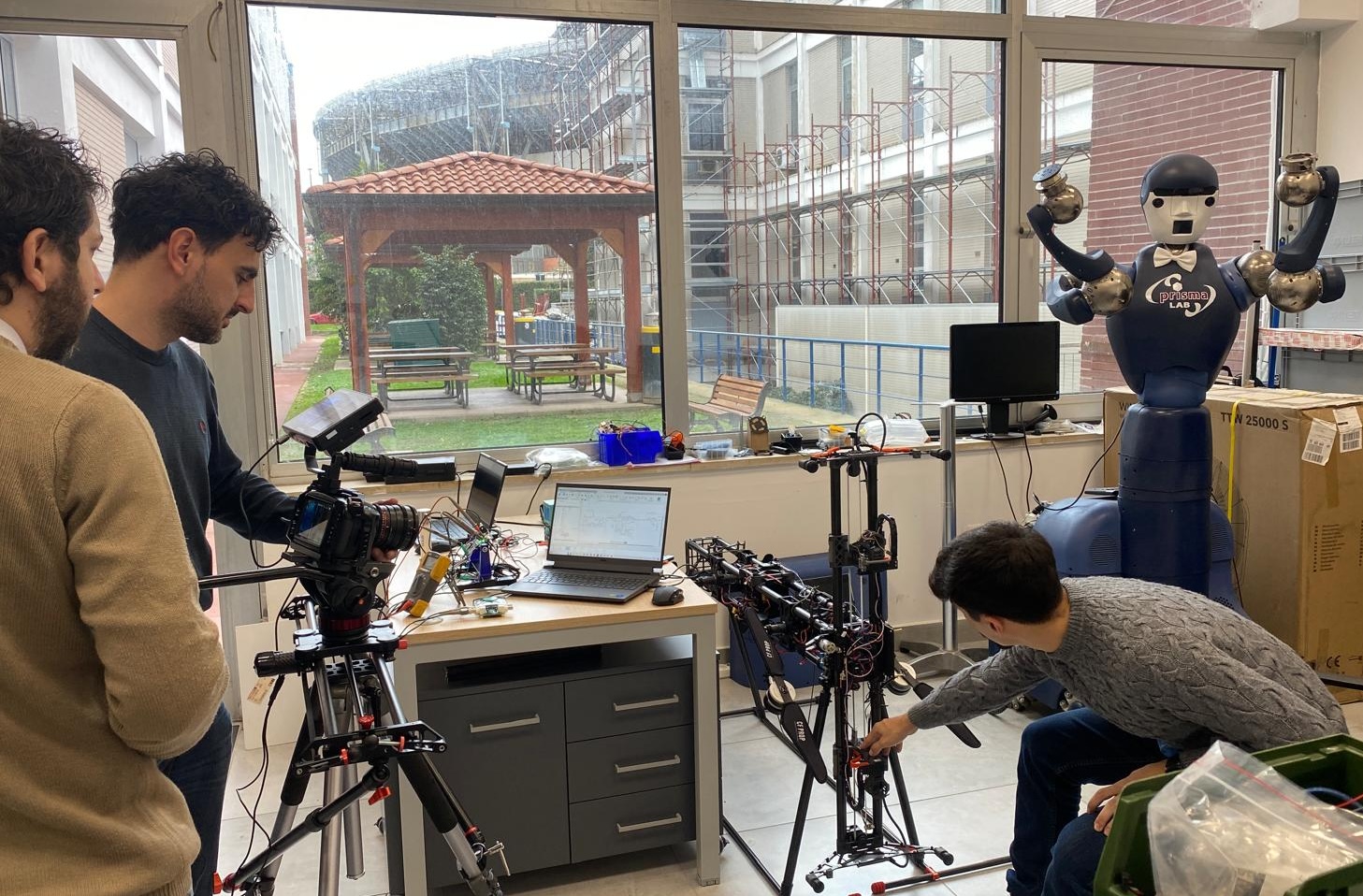
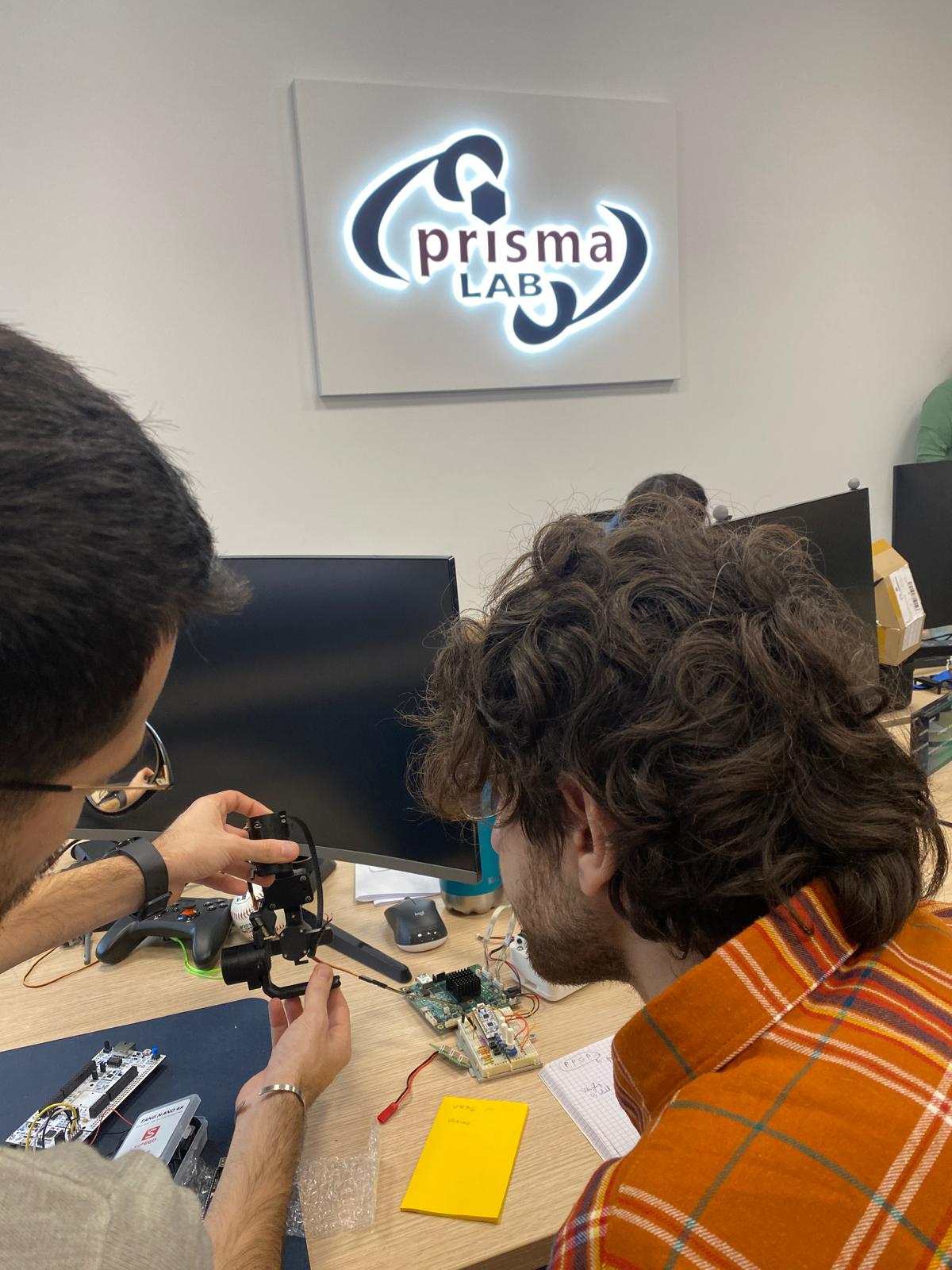
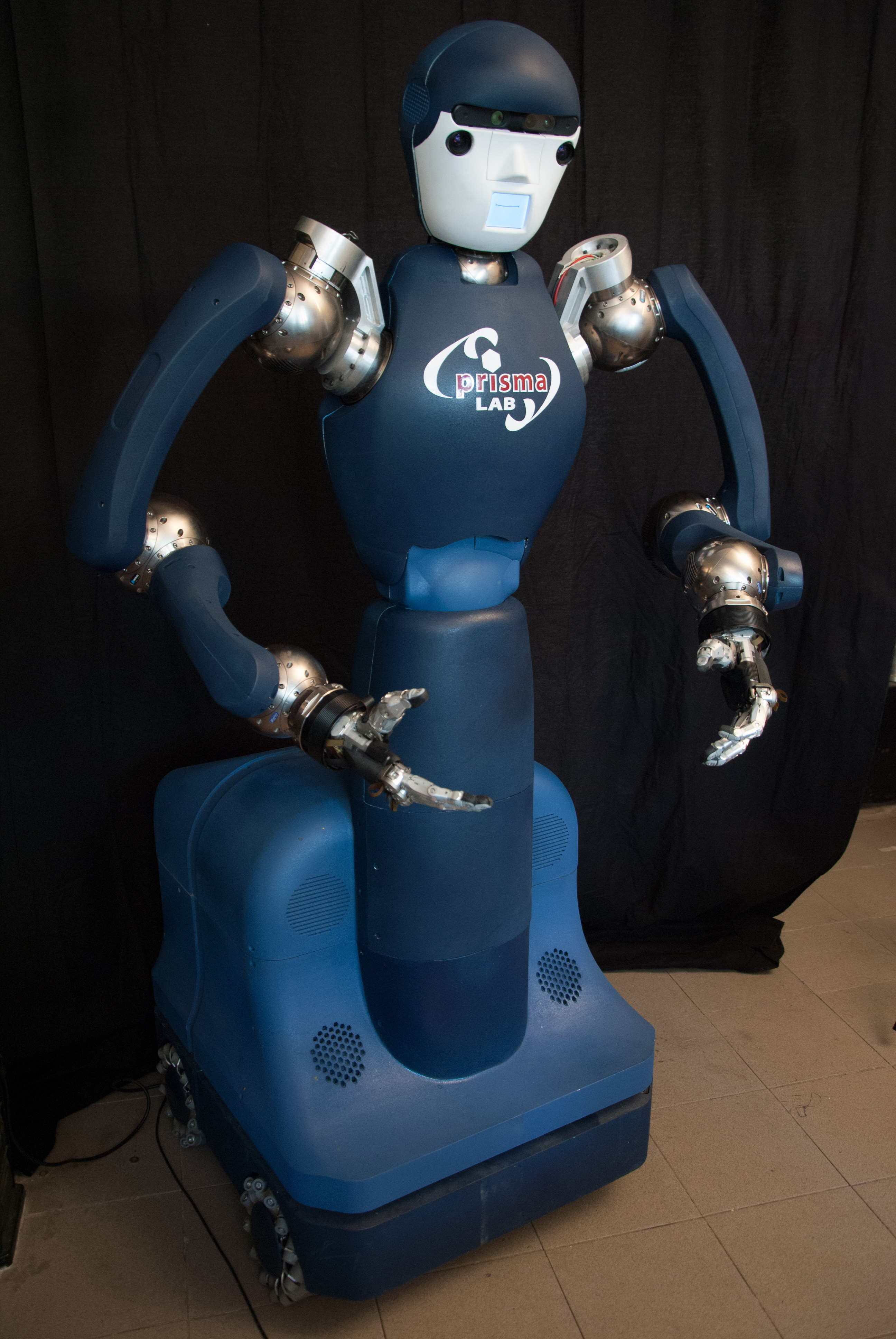
- Humanoid-like 21-degree-of-freedom robot
- Omnidirectional mobile platform
- Two SCHUNK LWA 4P arms with 6 degree of freedoms each
- 7th degree of freedom provided by SCHUNK PRL-100 integrated into shoulder
- Two motors actuating torso and one motor for pan-tilt neck
- QNX-based PC for real-time and low-level control of motors and implementation of safety procedures
- Linux-based PC used for perception and high-level planning and control algorithms
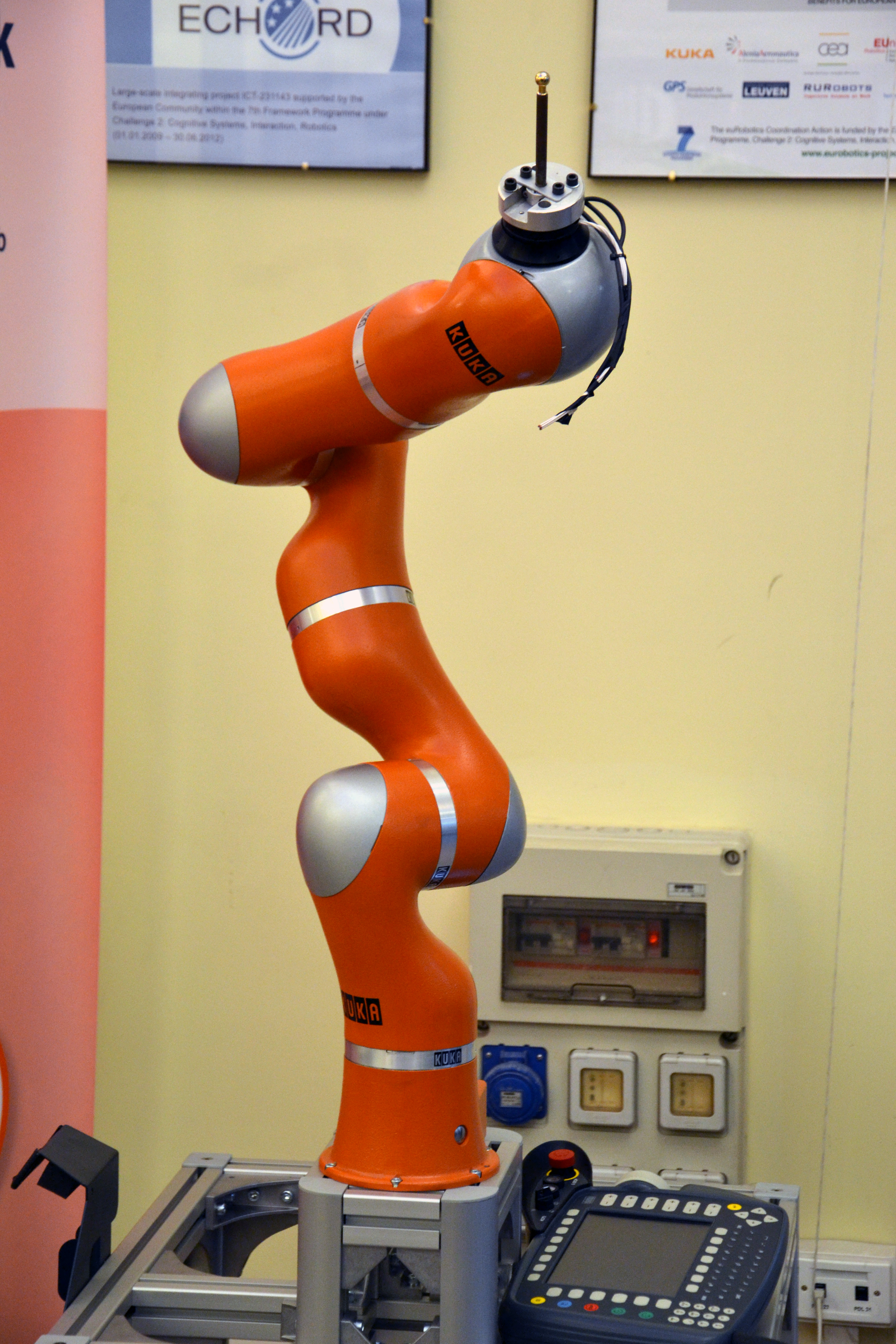
- 7 kg payload
- 7-degrees-of-freedom robot
- In-line wrist variant
- Mounting flange DIN ISO 9409-1-A 50
- Any mounting position available
- 0.05 mm repeatability (ISO 9283)
- KR C2 lr controller
- 16 kg weight (excluding controller)
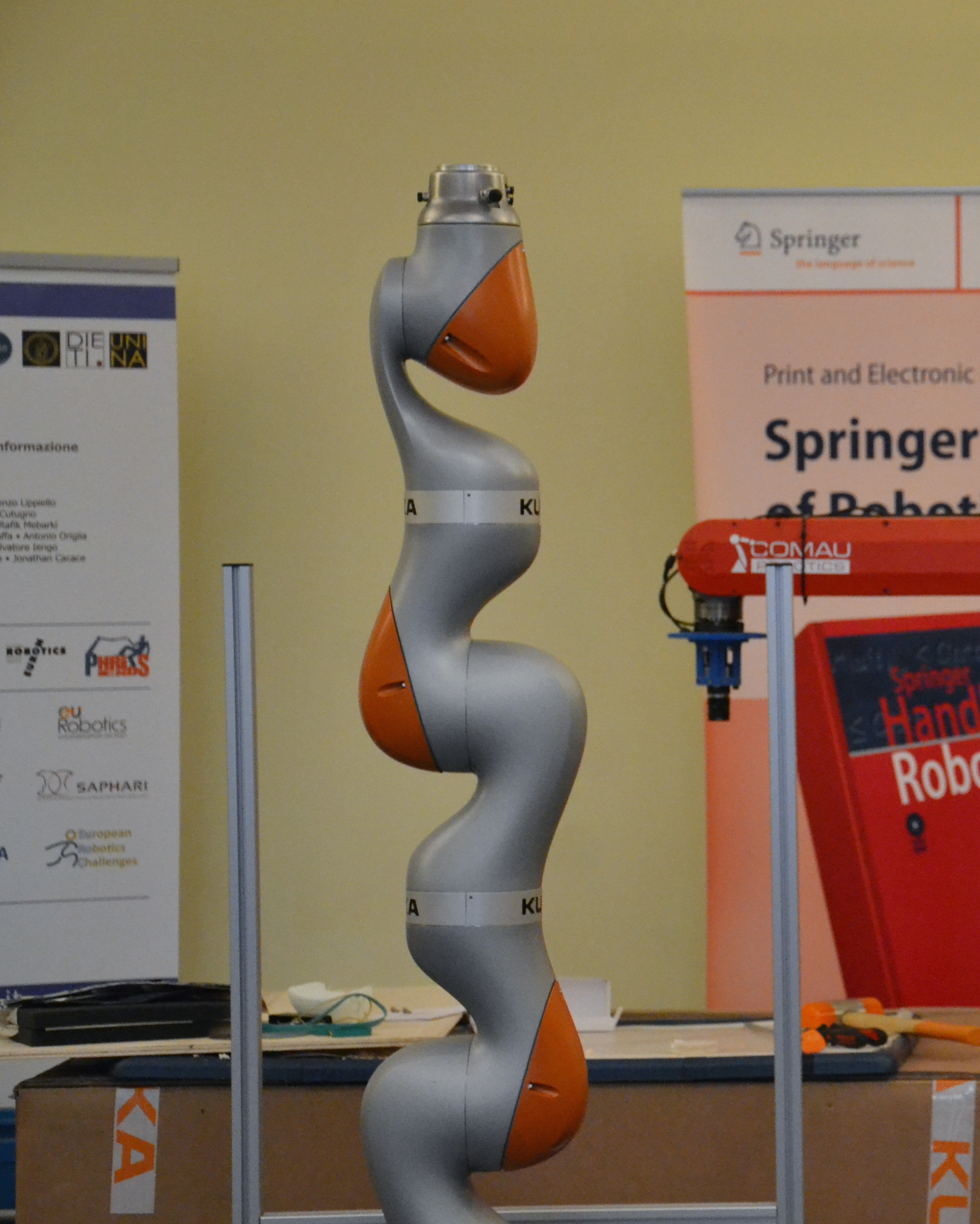
- 7 kg payload
- 7-degrees-of-freedom robot
- In-line wrist variant
- Mounting flange DIN ISO 9409-1-A 50
- 0.1 mm repeatability (ISO 9283)
- KUKA Sunrise Cabinet
- 22 kg weight (excluding controller)

- Anthropomorphic structure 1:1 ratio to the human hand
- 20 joints and 9 degrees of freedom
- Low energy consumption at 24 V DC
- Integration of control, regulator and power electronics in the wrist/li>
- ROS driver available
- RS-485 interface
- Easy connection with market-standard industrial and lightweight robots
- 1.3 kg weight
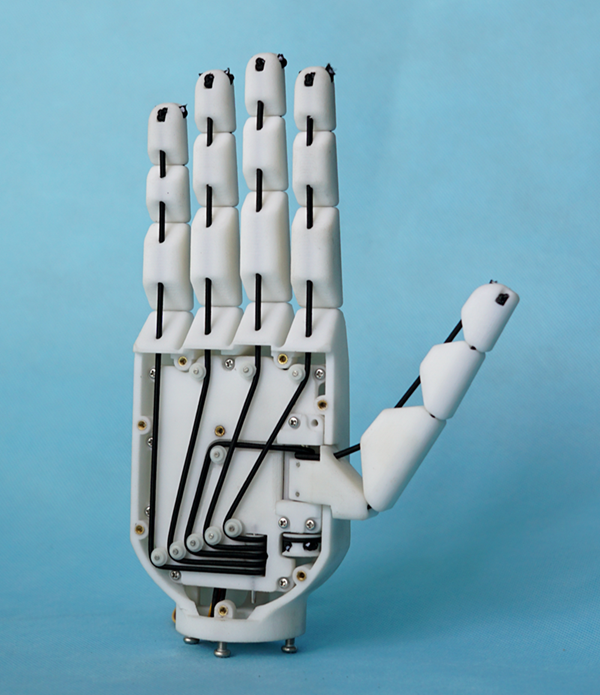
- 3D printed
- 16 degrees of mobility
- 2 motors
- Tendon actuation
- Arduino UNO microcontroller
- 336 weight (excluding controller)

- 3D printed
- 18 degrees of mobility
- 3 motors
- Tendon actuation
- Motor position sensors
- Tactile sensors at the fingertips
- Arduino UNO microcontroller
- 336 g weight (excluding controller)
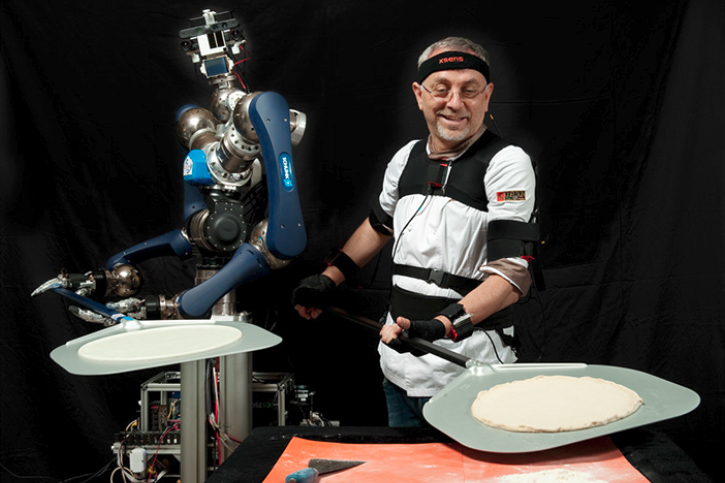
- MTx inertial and magnetic measurement units
- 3D gyroscopes, 3D accelerometers, and 3D magnetometers
- Body worn sensors on shoulders, sternum, head, arm, forearm, and hand
- Two Xbus Masters handle the wireless communication with the PC and synchronize all sensor
- Real-time frequency of maximum sampling rate of 120Hz
- MVN Studio Software
- 1.9 kg weight
